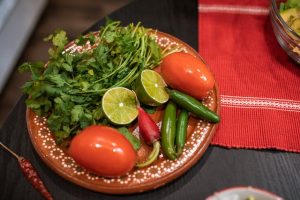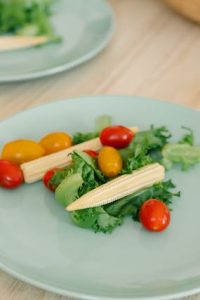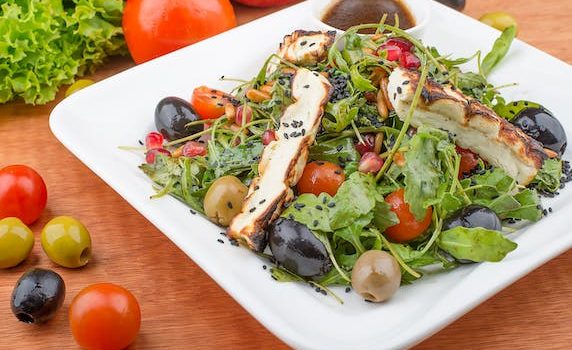
Introduction:
Are you ready to embark on a flavorful journey through the world of coriander? As a seasoned chef and culinary enthusiast, I’ve dedicated years to unraveling the secrets of this aromatic herb. In this article, I’ll share my expertise and provide you, fellow lifestyle and food enthusiasts, with advanced techniques, tips, and in-depth insights on how to make the most of coriander in your culinary adventures. Coriander is not just a spice; it’s a culinary masterpiece waiting to be explored. We’ll delve into its rich history, geographical significance, and the diverse ways it can be utilized in your cooking. As a seasoned chef and culinary enthusiast, I’ve dedicated years to unraveling the secrets of this aromatic herb.lifestyle and food enthusiasts, with advanced techniques, tips, and in-depth insights on how to make the most of coriander in your culinary adventures.

The Versatile Coriander
Coriander is not just a spice; it’s a culinary masterpiece waiting to be explored. It’s a plant that offers both seeds and leaves, each with its own unique flavor profile and culinary applications. This herb has a rich history dating back thousands of years and is a crucial ingredient in many global cuisines. Coriander is not just an aromatic addition to your dishes; it’s a journey of taste and culture.
Historically, coriander has been used in various cuisines, from the fragrant curries of India to the zesty salsas of Mexico. Its use spans continents and is an essential component in countless dishes, providing a distinct and refreshing flavor that elevates the overall culinary experience.
Choosing the Right Coriander
When diving into the world of coriander, one of the first choices you’ll face is deciding between coriander seeds and fresh coriander leaves, often referred to as cilantro. The decision will significantly impact the flavor and style of your dishes. Coriander seeds are the dried fruits of the coriander plant. They have a warm, earthy, and citrusy flavor profile. These seeds are commonly used in spice blends, curries, and marinades. To bring out their full flavor, toasting them briefly in a dry pan before grinding is a common practice. This simple step releases a burst of aroma and flavor that can transform your dish. Cilantro, the fresh leaves of the coriander plant, offers a completely different culinary experience. The leaves are citrusy, herbaceous, and have a bright, refreshing flavor. They are often used as a garnish in salads, salsas, and various Asian and Latin American dishes. The leaves are typically added at the end of the cooking process, as prolonged heat can cause them to lose their vibrant flavor.
Coriander’s Flavor Profile
Coriander has a unique flavor profile that deserves closer attention. The seeds and leaves both share a citrusy undertone, but their profiles diverge in many ways. Coriander seeds offer a complex mix of flavors, including earthy, citrusy, and warm notes. When ground, they release a fragrant and almost sweet aroma that can greatly enrich dishes. You’ll often find them in spice blends, like garam masala, and they are an essential ingredient in the famous Indian curry powder. On the other hand, fresh coriander leaves, or cilantro, bring an unmistakable herbaceous citrusy aroma to the table. This herb is commonly used in Mexican cuisine, particularly in salsas and guacamole, where its bright flavor complements the richness of avocados and the spiciness of peppers.
Elevating Your Culinary Skills
Now that you’re familiar with the forms and flavors of coriander, let’s dive into some advanced techniques for using this versatile herb. Coriander can be a true game-changer in your kitchen, adding depth and dimension to your dishes.
1. Toasting Coriander Seeds
Toasting coriander seeds is a simple yet effective way to intensify their flavor. Heat a dry pan and add the seeds. Shake them occasionally until they release their aromatic oils and turn slightly brown. Once toasted, grind them to add a whole new level of flavor to your spice blends and curries.
2. Coriander Marinades
Coriander-based marinades can transform your meats and vegetables. Create a marinade by combining crushed coriander seeds, garlic, olive oil, and a dash of lemon juice. This marinade pairs well with chicken, lamb, and grilled vegetables, infusing them with a rich, exotic flavor.
3. Fresh Coriander Leaves in Garnishes
Cilantro is a fantastic garnish for a wide range of dishes. Its vibrant, fresh flavor pairs well with the rich, savory notes of Mexican and Indian cuisine. Add it to tacos, soups, or salsas just before serving to ensure the full impact of its flavor.
4. Coriander in Homemade Spices
Blend your own spice mixtures using coriander seeds as a base. Experiment with complementary spices like cumin, cardamom, and cloves to create unique and personalized blends. These custom spice mixes can breathe life into your dishes, making them stand out.

/
KeyPoint:
| Aspect | Ground Coriander | Fresh Coriander Leaves |
|---|---|---|
| Flavor Profile | Earthy, citrusy, warm | Citrusy, herbaceous |
| Culinary Uses | Spice blends, rubs, curries | Garnish, salads, salsa |
| Shelf Life | Longer | Shorter |
| Preparation | Requires grinding | Fresh leaves. |
| Cooking Techniques | Toasting, frying | No cooking required. |
Conclusion:
Coriander is a culinary gem that can elevate your dishes to new heights. As a lifestyle and food enthusiast, you now possess advanced techniques, valuable tips, and a deeper understanding of this magical herb. It’s time to unlock the culinary mystery of coriander and take your cooking skills to a whole new level. we’ve journeyed through the essence of coriander, exploring its history, flavors, uses, and health benefits. Armed with this knowledge, you can now confidently experiment with coriander in your kitchen, creating dishes that are truly a culinary masterpiece. So, go ahead, grab your coriander, whether in the form of seeds or fresh leaves, and let the aromatic adventure begin. Whether you’re adding a pinch of ground coriander to your favorite curry or sprinkling fresh cilantro leaves on your homemade salsa, your taste buds and dining companions will thank you for it. Remember, the key to becoming a culinary maestro is not only about following recipes but also understanding the ingredients you work with. Coriander is a versatile and aromatic herb that can lend its unique magic to a wide range of dishes.










